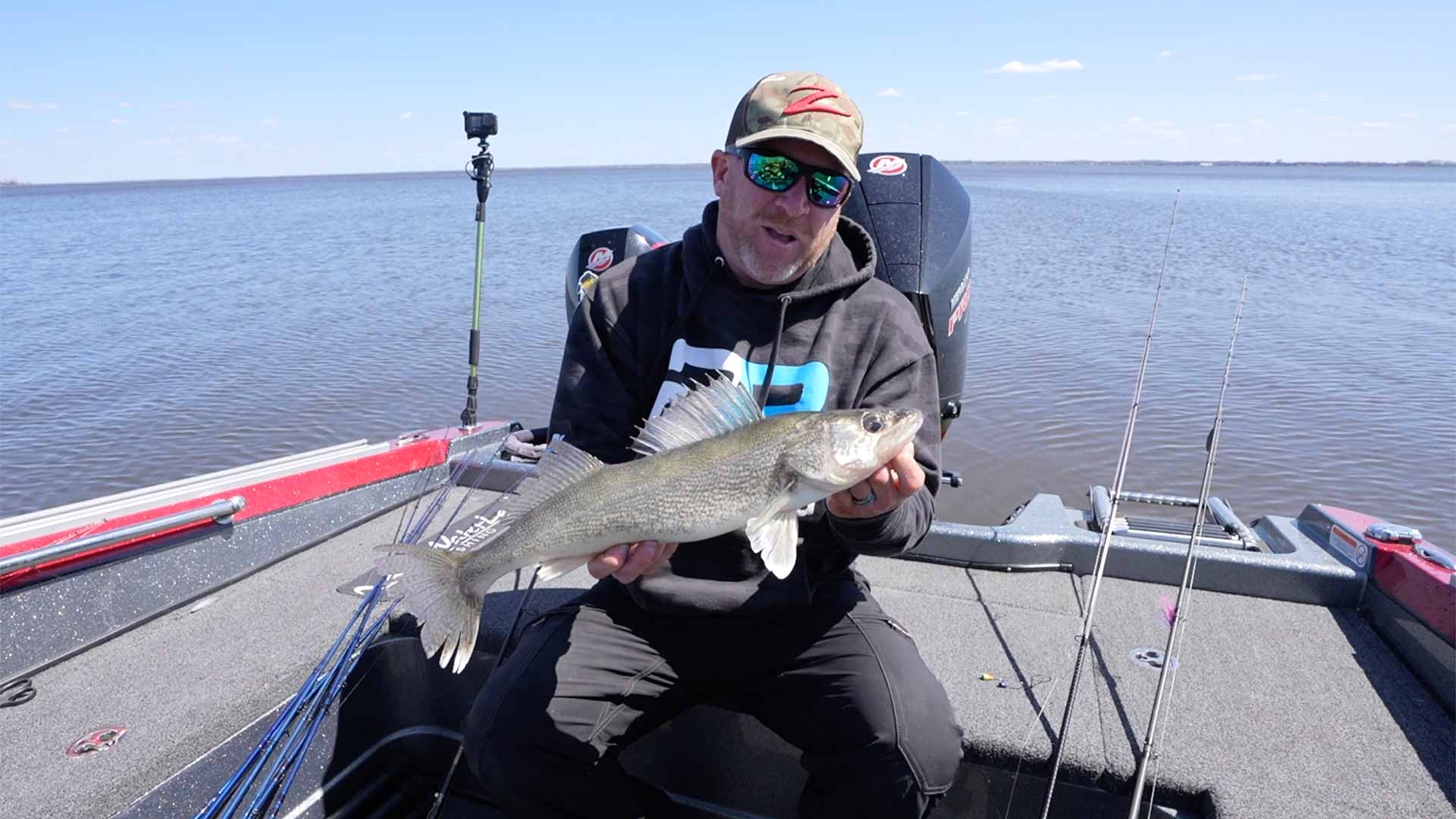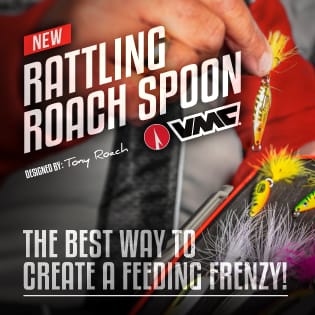In this episode of #AskTheBuzz, Nick Linder sits down with professional angler Joel Nelson to discuss choosing jig weights for late-season walleyes, the benefits of using braid over mono, and targeting big jumbo perch. Joel shares his insights and expertise on these topics, providing valuable tips and advice for anglers. So let’s dive in and learn from the best!
Determining the Right Jig Weight for Walleye Fishing
The first question comes from Aaron Langwall, who asks Joel if he has a quick and easy rule for determining the right jig weight or Lindy rig weight for walleye fishing. Joel breaks it down into eighth-ounce intervals, starting with eighth-ounce jigs in less than 10 feet of water, moving up to quarter-ounce jigs in 10 to 20 feet of water, and finally using three-eighth-ounce jigs for 30 feet of water. However, Joel emphasizes that jig fishing is all about feel, and if you’re not able to feel the jig due to wind or boat control issues, it’s important to adjust the jig weight accordingly. He suggests moving up in eighth-ounce intervals as needed to ensure good bottom contact and feel with the jig.
When it comes to Lindy rig fishing, Joel starts with half-ounce weights for water depths over 20 feet and goes up to three-quarter ounce weights. Again, the key is to have good contact with the bottom and hold just above it. For pulling bottom bouncers, Joel recommends using one ounce for every 10 feet of water. This means using three ounces for pulling spinners in 30 feet of water.
The Benefit of Lighter Jig Weights
Nick follows up by asking Joel about the benefit of using lighter jig weights. Joel explains that the conventional wisdom is that lighter jig weights can result in more bites because they fall and react more naturally. However, he emphasizes that good contact and feel are crucial for detecting bites. If you’re not able to feel the jig when a fish bites, it doesn’t matter how natural your presentation is. Joel personally prioritizes feel and weight over a lifelike presentation, especially because he grew up fishing in areas with current where feel and contact were essential.
Water Temperature and Walleye Behavior
The next question, from Mike Kramer, is about the water temperature at which walleyes slow down into their wintering pattern. Joel explains that in the north, where he is located, winter walleyes mean ice fishing. The strong first ice bite is not just due to water temperature but also because of weed growth and light penetration into the shallows. In winter, there is less snow on top of the ice, allowing more light to reach the shallows. In rivers or open water, Joel starts looking at water temperatures in the mid-30s to low 40s for walleyes to slow down. In river situations, wal leyes will move up to wintering holes just below dams, while in open water, they will behave more like midwinter walleyes. As the winter season approaches, Joel suggests transitioning from casting jigs and faster-moving baits to slower-moving presentations. For river fishing, vertical presentations moving with the current downstream are effective in putting the bait right in front of the fish’s face.
The Advantages of Using Braid over Mono
Frank Guy asks Joel if there is a big advantage to using braid over mono and in what applications. Joel admits that he is biased towards braid and explains that he became a huge fan of it after fishing with it for various species like bass, walleyes, musky, and pike. Braid offers increased sensitivity, allowing anglers to feel more bites and improve their hookup percentages. Unlike mono, braid does not stretch, resulting in better bite detection and hooking power. Joel uses braid for almost all open water applications, except for trolling deep water with lead core. However, he does use mono as a main line in certain situations, such as river fishing where the buoyant properties of mono can be advantageous.
Consistently Catching Big Jumbo Perch
The final question, from Mike Kellner, is about the most consistent way to catch big jumbo perch. Joel explains that the first step is to fish where the big jumbo perch are. Locations like South Dakota, North Dakota, Lake Gogebic, and Devil’s Lake are known for producing big jumbo perch due to favorable habitat conditions and the presence of shrimp. Joel recommends using bigger baits, such as big Rapala Rippin’ Raps, slab wraps, and eighth-ounce to quarter-ounce spoons with full minnows. Fishing aggressively with big baits increases the chances of catching big jumbo perch consistently.
On this episode, I sit down with Joel Nelson and we answer the following question:
0:43 – Do you have a quick and easy rule for determining the right jig weight or Lindy rig weight for walleye fishing?
3:02 – At what water temperature do walleyes seem to slow down into their winter pattern?
5:20 – Is there really a big advantage to using braid over mono? If so, what applications?
7:44 – What is the most consistent way to target big jumbo perch?
Never miss an episode of #AskTheBuzz. Subscribe to our YouTube channel for instant updates: Subscribe Here









